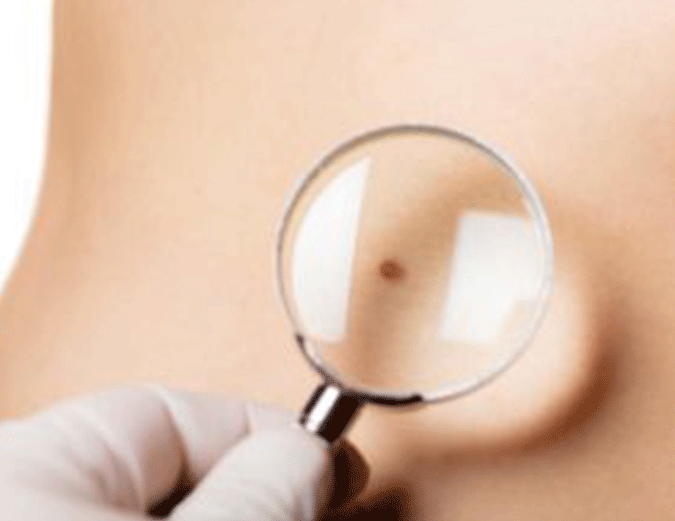Types of Skin Cancer
Early detection of skin cancer can reduce the need for more invasive removal of advanced skin cancers. Regularly check your and your family's skin for changes to spots, or any new spots that may arise. Also, maintain your regular full skin check appointments to allow our highly trained Doctors to ensure nothing is being overlooked. A full skin check could safe your life.
Below is a list of cancerous and non-cancerous skin lesions. If you feel like any of your lesions have visual characteristics similar to those of cancerous spots, contact us to see a Doctor for a full skin check.
Click here for more information about skin cancer.


- If untreated, cancer cells spread to other parts of the body. If treated early, 95% are cured.
- Appears as a new spot, or an existing spot, freckle or mole that changes colour, size or shape.
- Usually has an irregular or smudgy outline and is more than one colour. - Grows over weeks to months, anywhere on the body.
- A thickened red, scaly spot. Later it may bleed easily or ulcerate.
- Appears on sites most often exposed to the sun.
- Grows over some months.
- Appears as a lump or scaling area.
- Red, pale or pearly in colour.
- As it grows it may become ulcerated like an unhealing sore or one that heals then breaks down again.
Grows slowly, usually on the head, neck and upper torso.
- Often flat, fairly large moles which share some of the features of early melanoma.
- Characterised by irregular boarders and uneven colour with multiple shades of brown and sometimes pink.
- Characterised by red, flattish, scaling areas which may sting if scratched.
- Sunspots appear on sun exposed skin in the over 40 age group.
- They have a very discrete edge and frequently sit up on top of the skin.
- Colour varies from pale skin through orange to black.
- Size varies from few millimetres to 2cm.
- Moles are evenly coloured and may be raised although they do not have to be.
- Moles have clear, even edges and are usually circular or oval in shape.
Sun Smart Tips
Living in the Sunshine State with our golden sandy beaches and clear blue water makes North Queensland an enviable place to live; however all this sun can be dangerous. Australia alone has one of the highest rates of melanoma in the world, with Queensland's rates the highest in the country. Unfortunately young Australians are the most at risk with melanoma the most common cancer in 15-39 year olds.
At Skin Alert we believe prevention is the best treatment, and early education for our children is very important. Our sun smart tips below are a great guide to enjoying our beautiful part of the world while remaining safe.
Prevention is the best protection.
Wear cool and long-sleeved, tightly weaved clothing where possible.
Sunscreen should never be the only method of sun protection used.
Apply a water-resistant, broad spectrum sunscreen of SPF30+ or higher. Remember to re-apply every 2 hours, especially after towel drying, swimming or sweating excessively.
Caps alone do not provide adequate coverage.
Wear a broad-brimmed style hat, or one that covers your neck and ears - as well as your face. The ears, sides of the face and back of the neck are common sites for skin cancers.
Harmful UV rays can reflect off surfaces such as sand, water and paving.
Shade provides excellent protection but be sure to use other preventative measures whilst staying out of the sun.
Australian Sunglasses Standards recommends a protection rating of 3 or higher.
Protect your eyes with close-fitting wrap-around sunglasses. Choose glasses with protective lenses where possible.
Early detection saves lives.
Be sure to have regular full skin checks with your Doctor. Self-monitor for any abnormal moles or skin lesions and if you are concerned, please see your doctor.
